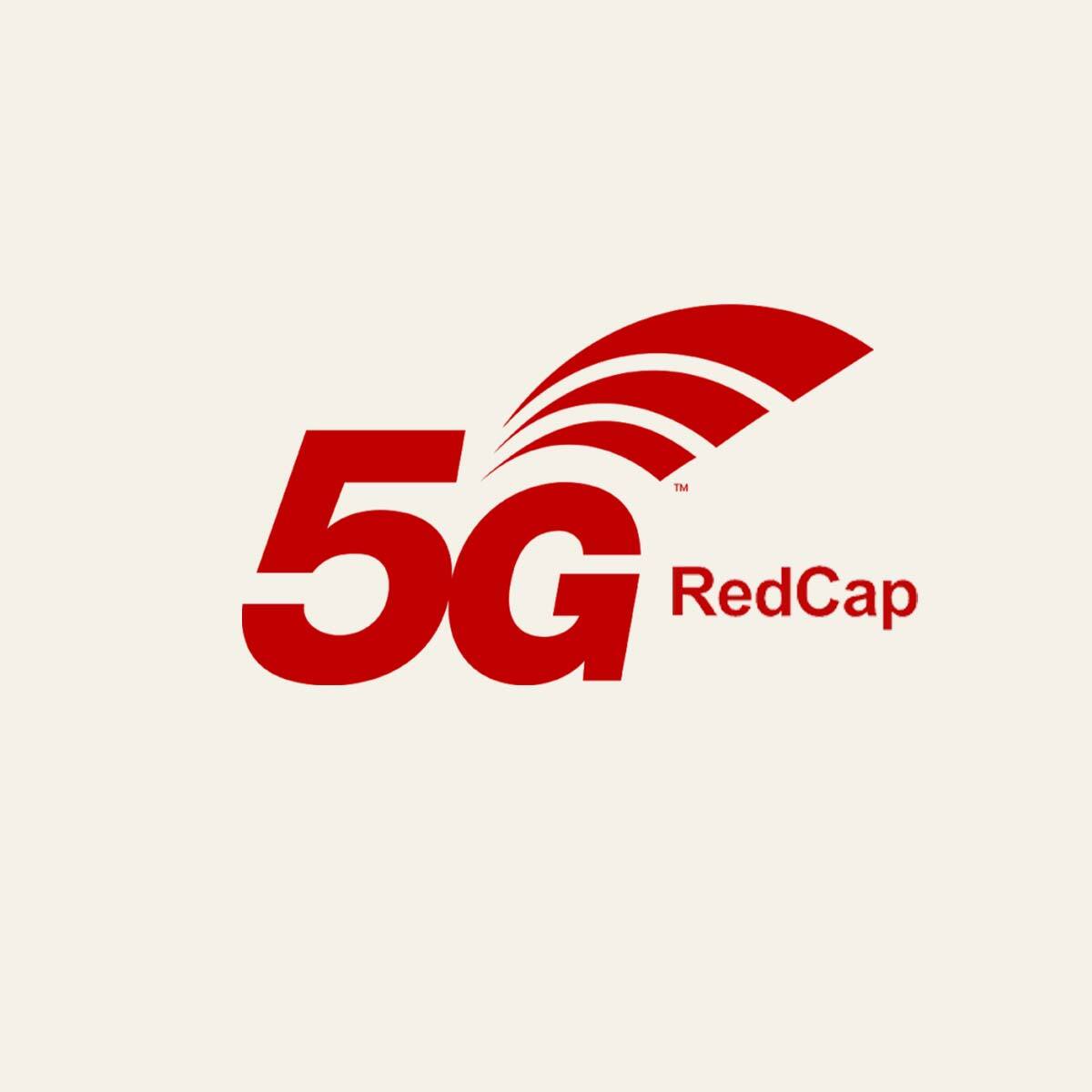The global 5G RedCap Terminal market is growing rapidly. According to Data Insights Market, it could reach 8.2 billion USD by 2025. The study also predicts a 28% compound annual growth rate (CAGR) from 2025 to 2033.
At Com4, we help organisations connect and manage millions of IoT devices with secure and reliable cellular connectivity. This article explains what 5G RedCap is, why it matters for IoT, and how Com4 helps businesses use it effectively.
What is 5G RedCap?
5G RedCap is a feature introduced in 3GPP Release 17. It is designed for IoT and wearable devices that do not need the full performance of standard 5G. RedCap reduces hardware complexity by using fewer antennas and simpler radio components. This helps lower device cost and power use, while still offering the core advantages of 5G networks.
Compared with LTE-M and NB-IoT, RedCap provides higher data speeds and more stable connectivity. It supports applications that send data more often or need clearer signal quality but still require long battery life. It does not aim to match the very high speeds used for advanced 5G applications, but it offers a suitable middle level that is practical for most IoT deployments.
In simple terms, RedCap sits between LTE-M and full 5G. It brings the reliability and low latency of 5G to devices that must remain small, efficient and affordable. This makes it a strong option for connected sensors, health wearables, smart meters, portable security devices and other IoT solutions where performance and energy efficiency must be balanced.
Bandwidth and Technical Specifications of 5G RedCap
5G RedCap is engineered to bridge the gap between the capabilities of 4G and 5G, offering a targeted solution for IoT applications. The table below outlines the key features of 5G RedCap compared to standard 5G:
|
Feature |
5G Standard |
5G RedCap |
|
Bandwidth |
100 MHz |
20 MHz |
|
Antennas |
4 RX antennas |
Reduced number |
|
Latency |
Ultra-low |
Low (as low as 5 ms) |
|
Peak Data Rate |
Very high |
High enough for IoT applications |
|
Power Efficiency |
Moderate |
High |
|
Complexity |
High |
Reduced |
Where 5G RedCap fits in the IoT connectivity landscape?
IoT connectivity spans several cellular technologies, each designed for different device types and performance levels. The table below shows where 5G RedCap sits in that ecosystem and how it contributes to global connectivity across industries.
|
Technology |
Data Rate |
Power Usage |
Example Applications |
|
NB-IoT |
Low |
Very Low |
Smart meters, sensors |
|
LTE-M |
Medium |
Low |
Trackers, portable health devices |
|
5G RedCap |
Medium to High |
Medium |
Industrial sensors, wearables, cameras |
|
5G NR (full) |
Very High |
High |
AR/VR, autonomous systems |
5G RedCap offers a balance between cost and performance. It is particularly useful for IoT devices that handle richer data than LTE-M can support, but don’t need the full bandwidth of 5G NR.
Com4’s Global IoT SIM Cards make it simple to connect RedCap devices across borders, ensuring consistent coverage and management across more than 190 countries.
Key 5G RedCap use cases for IoT
5G RedCap will play an important role across multiple IoT sectors. Before diving into examples, it helps to understand that Com4’s capabilities are already proven through real-world deployments in healthcare, construction, infrastructure and logistics.
Below are a few areas where 5G RedCap can make a measurable impact.
Wearables and digital healthcare
Healthcare IoT devices need constant connectivity and low power use. 5G RedCap enables wearables and medical sensors to transmit data more efficiently, helping improve patient monitoring and responsiveness.
MedThings, for instance, uses Com4’s eSIM technology to connect its smart medication dispensers securely. As 5G RedCap matures, similar devices can gain better data throughput and longer operational life.
Remote surveillance and smart security
Security and surveillance systems rely on stable connectivity to transmit images and video. 5G RedCap provides the right performance for mobile cameras that need higher quality than LTE-M offers, but lower costs than full 5G.
In the Intellity case study, Com4 connectivity powers real-time construction site monitoring. Deploying 5G RedCap will enhance this kind of use case with improved responsiveness and lower power draw.
Industrial IoT and predictive maintenance
Factories and industrial sites rely on connected sensors to track equipment performance and detect early signs of wear. 5G RedCap provides stable data transfer and lower latency, which supports timely alerts and automated responses. Its reduced hardware complexity also helps keep device cost and power use manageable in large-scale sensor deployments.
Smart cities and connected infrastructure
From intelligent traffic systems to connected lighting, 5G RedCap provides an efficient backbone for large-scale smart city projects. Our Connectivity Packages give municipalities and solution providers the tools to scale such deployments with strong network control and built-in security.
Connected transport and logistics
Transport and logistics operations require constant data exchange, often across borders. 5G RedCap enables continuous tracking and diagnostics while extending battery life for on-board devices.
With Global IoT Coverage, Com4 ensures uninterrupted communication for fleets and containers wherever they travel.
Smart grid and energy systems
Power networks depend on regular status data from field equipment. 5G RedCap supports stable reporting from meters, transformers and sensors while keeping power use moderate. This helps operators detect faults earlier and manage distribution more efficiently, without the cost or complexity of full 5G hardware.
Gomero, for example, integrates IoT and AI to improve electric grid maintenance. With Com4’s secure Private APN and VPN options, this type of deployment will benefit from RedCap’s enhanced throughput and reduced hardware cost.
The following table provides a detailed overview of the specifications for different 5G RedCap applications:
|
Use Case |
Device Type / Application |
Latency |
Battery Life |
|
Industrial Wireless Sensors |
Midi-tier Sensors (Temperature, Pressure, etc.) |
<100 ms; Safety applications: 5 ms to 10 ms |
~2 years |
|
Video Surveillance |
Smart Cities, Agriculture, Factories |
<500 ms |
N/A |
|
Wearable Technology |
Smartwatches, Health Monitors |
N/A |
Multiple days up to 1-2 weeks |
Practical considerations for IoT product teams
Adopting 5G RedCap is more than choosing a new module. It needs careful planning for device design and certification. It also requires long-term thinking about how devices connect and stay updated.
- Module and chipset availability: Chipsets like Qualcomm Snapdragon X35 and MediaTek T300 already support 5G RedCap. More models will become available as operators expand coverage in 2025.
- Network readiness: Check if your target markets support 5G RedCap. Speak with your connectivity partner, such as Com4, to confirm which bands and networks are active.
- Testing and optimisation: Test each device under real network conditions. Use Com4’s Add-on IoT Products and IoT Test Lab to measure power use, reliability, and latency.
- Security and connectivity management: Use Com4’s Private APN and VPN services to protect IoT data. These tools keep communication private and make compliance easier.
- eSIM and iSIM integration: Try both options with Com4’s iSIM Evaluation Kit. Read our eSIM or iSIM blog to decide which solution is best for your IoT design.
- Certification and interoperability: Follow 3GPP and operator standards when choosing device modules. Certified hardware connects faster and works reliably across global networks.
- Lifecycle and firmware management: Build devices that can update themselves remotely. This makes it easy to apply firmware and network changes as 5G RedCap improves.
- Data analytics and monitoring: Track SIM activity and signal quality through Com4’s connectivity insights. Use these metrics to spot issues early and improve network performance.
How to pilot 5G RedCap with Com4?
Testing is the most reliable path to adoption. Below is a simple framework to pilot 5G RedCap with Com4:
- Define your IoT use case and expected data needs.
- Set up connectivity with Global IoT SIM Cards and configure a Private APN for secure traffic.
- Pilot your devices across selected regions using Com4’s global multi-network coverage.
- Analyse connectivity, energy usage and performance through the IoT Test Lab.
- Scale deployment with Connectivity Packages for simplified management and reporting.
This step-by-step approach helps reduce risk and ensures your devices are production-ready.
How Com4 strengthens your 5G RedCap strategy
Com4 has years of experience in IoT connectivity. Our team combines strong technical knowledge with proven global expertise.
We work with customers across many industries to deliver secure and scalable IoT solutions. With access to more than 750 networks in over 190 countries, we provide reliable coverage and strong performance wherever devices are deployed.
Our partnerships show how Com4 delivers real value. Beehive uses our connectivity for child safety wearables. Gomero depends on Com4 to improve industrial grid maintenance. These projects prove our ability to provide stable and secure IoT connections in challenging environments.
As more organisations test 5G RedCap devices, Com4 offers the right support. We supply the infrastructure, tools, and knowledge that help teams move smoothly from prototype testing to large-scale deployment.
The road ahead for 5G RedCap and IoT
5G RedCap is still evolving, with 3GPP Release 18 introducing enhanced RedCap (eRedCap) for improved power efficiency and wider device compatibility. Industry forecasts expect broader availability of commercial RedCap networks from 2025 onwards.
For IoT product teams, now is the ideal time to explore 5G RedCap through small-scale pilots. Visit Com4’s Connectivity Packages to see how we can support your rollout strategy.
5G RedCap offers a new balance of speed, efficiency, and cost for the IoT industry. It suits devices that need more capability than LTE-M but do not require the full power of 5G. This makes it an excellent choice for wearables, smart infrastructure, transport systems, and industrial automation.
When you partner with Com4, you gain secure and global IoT connectivity. Our solutions are built to scale with your business. They ensure that your 5G RedCap deployments stay reliable, flexible, and ready for the next generation of IoT technology.






